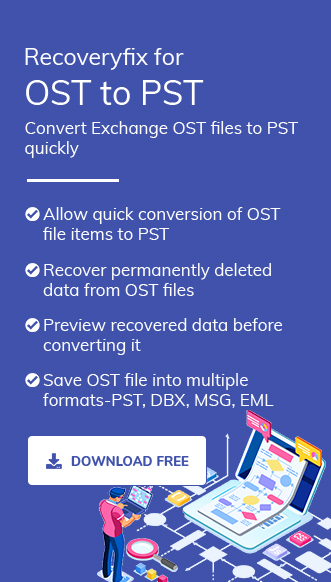Facing ‘errors have been detected in the file Outlook OST’ can be a frustrating experience for users, since it makes the OST file inaccessible for users.
In general, whenever this error occurs, experts suggest quitting Outlook and all mail-enabled applications and then using the Inbox repair tool (Scanpst.exe) can help you to diagnose and repair errors in the file. But these can become ineffective when your OST file has severe corruption or damage.
Is this creating a dilemma in your mind about the issue? If so, what are the best practices to resolve it? Follow this easy guide to understand the concern and the corresponding effective ways to fix it.
How do we identify problems with the OST file? [Major Signs!]
By recognizing the signs and symptoms of OST file issues, you will be able to identify and address potential problems more appropriately. Here are the key indicators to look out for:
- Outlook applications load or start slowly.
- Experiencing delays while sending or receiving new emails.
- Facing issues while the mailbox synchronizes.
- Outlook application crashes or freezes frequently.
Overlooking these symptoms may lead to severe issues with your OST files, including:
- OST files are severely corrupted or damaged.
- Users can’t access the data of OST files.
- Internal errors are disrupting the functionality of OST files.
Resolve “errors have been detected in the file OST” [Manually]
Solution 1. Delete and download information from Exchange Server
Deleting the problematic OST file is one of the effective ways to tackle this issue. Once the file is deleted, then redownload it from the Exchange Server to restore the data.
Note: It is advised that you should back up the file before deleting it.
- Open Outlook application, then go to File tab.
- Access the Account Settings drop-down and click on Account Settings option.

- Go to Data files tab, select the OST file that is causing the issue, and click on Open File Location option.
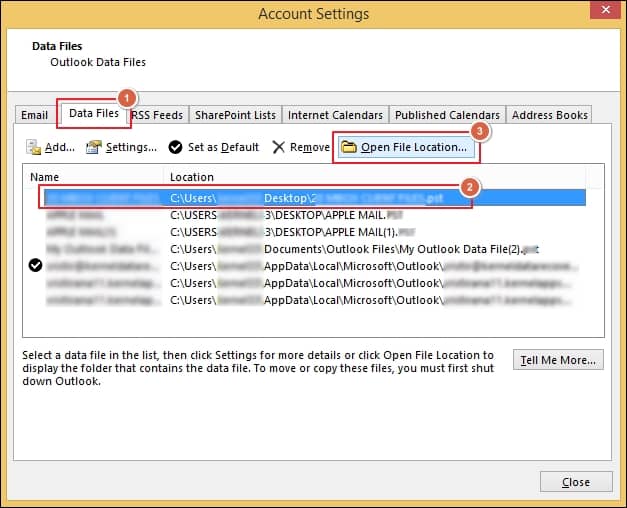
- It will open the OST file location. After that, right-click on the file and click on Delete option to delete it.
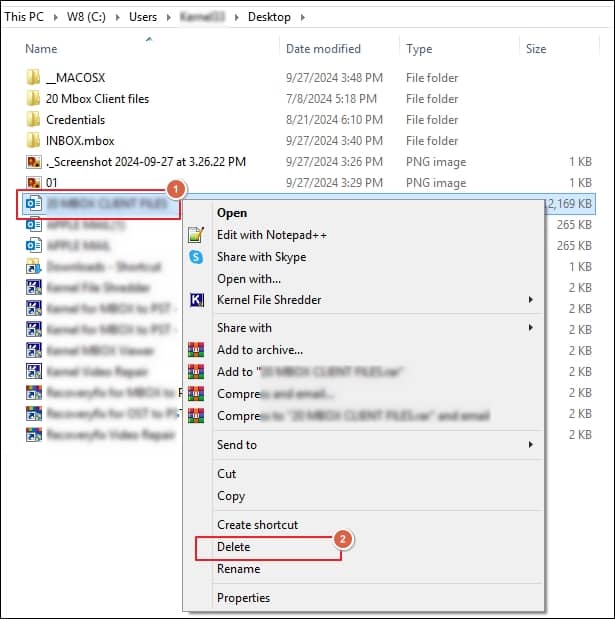
- Close the Outlook application when the file is deleted successfully.
- Now, launch the Outlook application to check whether the errors have been detected in the file OST are resolved or not.
Solution 2. Repair OST file with Inbox Repair Tool
The inbox repair tool (Scanost.exe) is a Microsoft inbuilt utility that assists users in removing minor corruption issues from OST or PST files. It scans and repairs your OST or PST files to make the file accessible again for smooth Outlook functionality. Once the repair process is completed, it creates the folders with the same as the original file in the .bak extension. So, if errors have been detected in your .ost file in Outlook, you can go for this tool to resolve the issue. However, it is necessary to run the tool multiple times to repair corrupt OST files.
Solution 3. Open Outlook in Safe Mode & disable faulty add-ins
Sometimes, faulty or incompatible add-ins might be one reason behind the “errors have been detected in the file Outlook OST” issue. To identify the faulty add-ins, open Outlook in Safe Mode and then disable them one by one. Here are the complete steps to do the same.
- Press Windows+R keys to open the Run wizard, then type Outlook/safe and press Enter key.
- Select an Outlook profile and click OK.
- Open the Outlook application, go to the File tab, and tap Options.
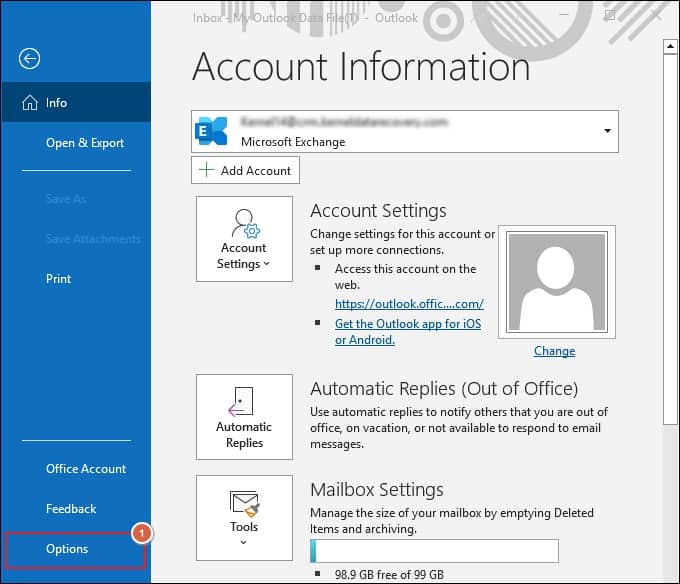
- Go to Add-ins tab, select the COM Add-ins option, and click OK.
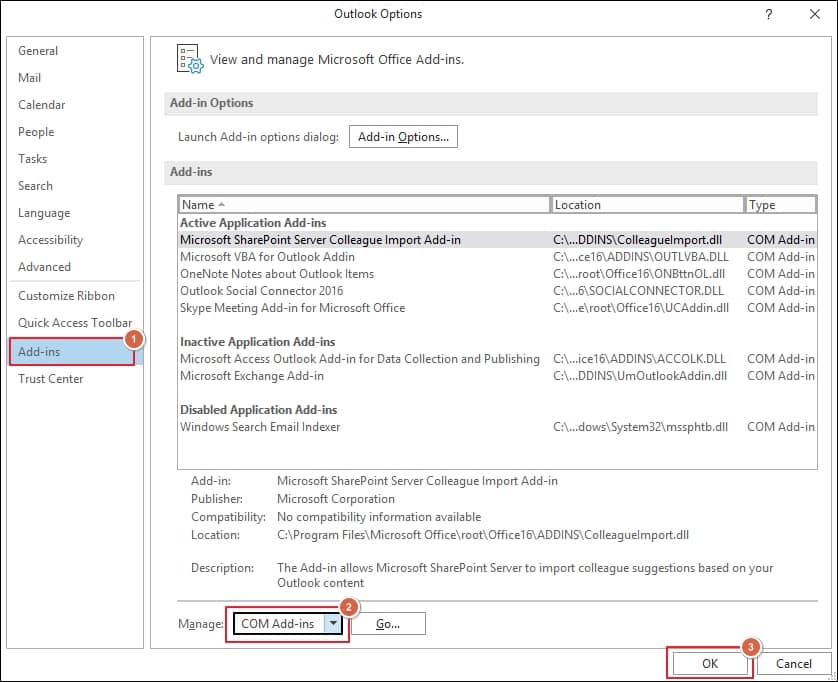
- Uncheck the available Add-ins individually, then click on Add option and proceed to OK.
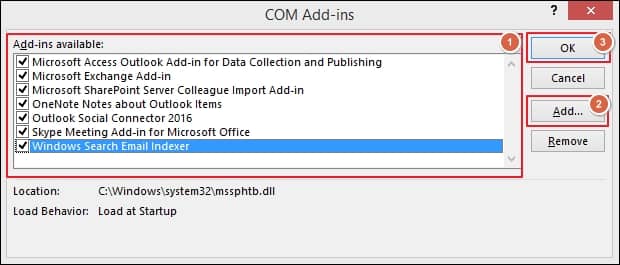
- Close the Outlook application and then relaunch it.
- Disable single Add-ins at a time to find the faulty one. Once the faulty add-in is identified, disable it permanently to make Outlook functional again.
- Exit from the Safe Mode after the faulty Add-in is disabled.
Solution 4. Restore OST file from backup
Restoring OST files from a backup is another best solution to recover from the “errors have been detected in the file OST” issue. The process involves archiving the OST file data, deleting the problematic file, and then restoring the backup file into the Outlook application. Here are the detailed steps to perform the procedure successfully.
- Launch the Outlook application, then go to the File tab and click on Options.
- Access the Advanced tab from the left pane and click on AutoArchive Settings option.
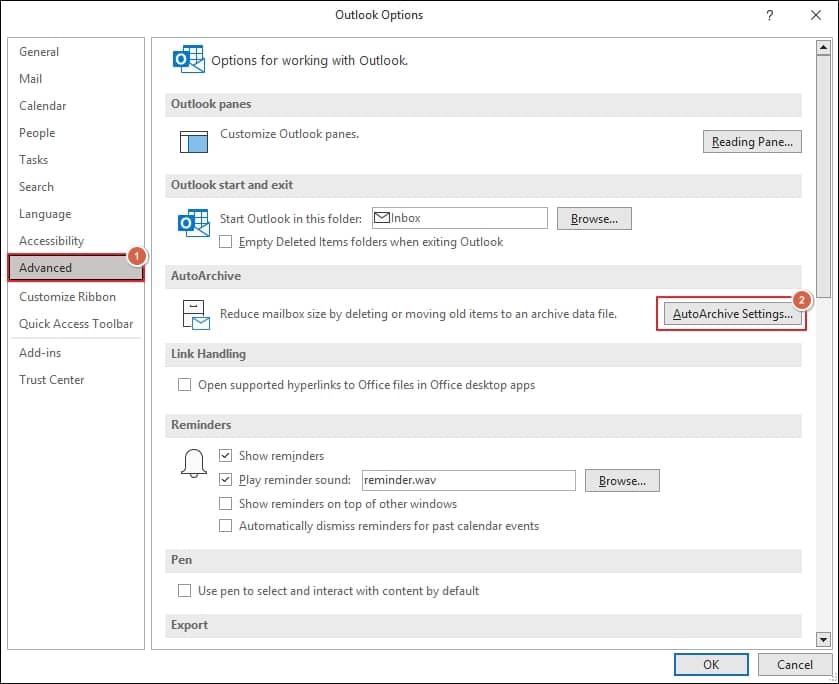
- Check the Run AutoArchive every option and copy the backup location under the Move old items to section.
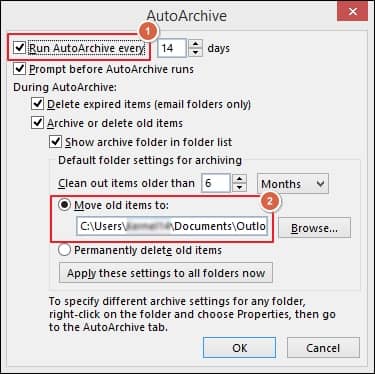
- Restore the backup file into Outlook using Import/Export utility once the backup file location is known.
If manual solutions don’t work, what can I opt for?
With the manual methods, you can fix the “errors have been detected in the file Outlook OST” issue. But in severe OST corruption cases, these methods may not help you to get the satisfactory results.
Hence, in that scenario, opting for automated OST to PST solutions can be the best way to recover OST files with ease. As per the user’s or professional satisfaction, you can build your trust with the Recoveryfix for OST to PST converter, which can help you fix OST-related issues. It is more desirable when your OST files don’t sync with Exchange mailboxes. Besides that, it helps you resolve oversized PST files issue with ease.
Final thoughts
Hopefully, we have covered all the must-know information about the errors have been detected in the file Outlook OST issues, including their symptoms, causes, and effective measures to resolve them.
You can choose any of them that meets your needs. If you are not satisfied with the manual results, check out the recommended advanced solution.
FAQs: Frequent Asked Questions!
Q1- How to rebuild OST file in Outlook using manual methods?
You can create the new OST file by following the given instructions:
- Rename the existing file. Once you log in to Outlook, it will create a new one.
- Delete the existing one. Outlook creates the new OST file as you access it.
Q2- Do manual methods help in the case when OST file keeps getting corrupted?
If OST file keeps getting corrupted, there is a high chance that your OST file is going with severe corruption. In that case, going for the advanced OST to PST solution is recommended over manual ones.


